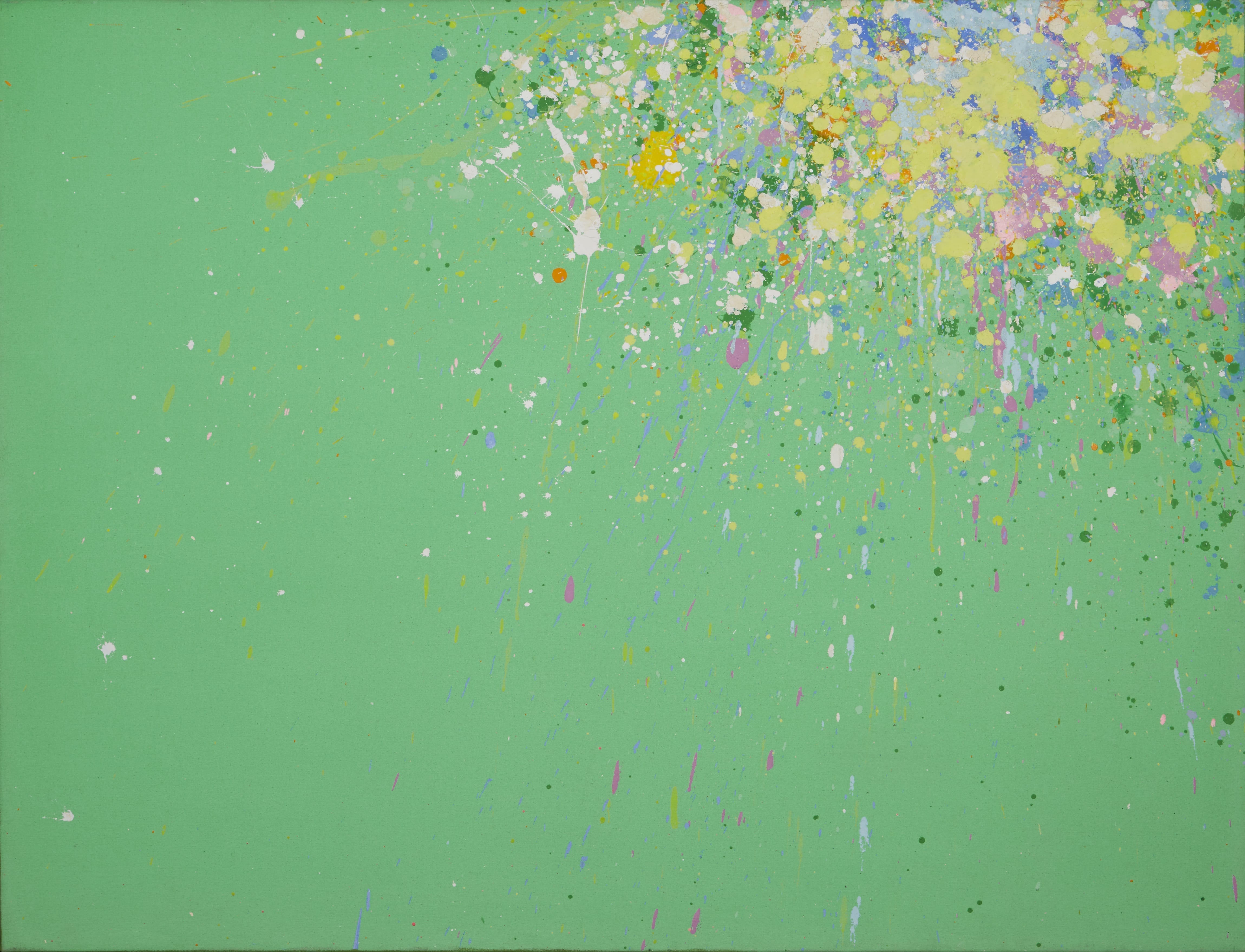
Walasse Ting (1929-2010). Abstract acrylic on canvas titled “All My Life is a Spring.” Painting is signed, titled, and dated ’71 along the verso. Labels from the Lefevre Gallery and the Minneapolis Institute of Art are attached to the verso.
Provenance: Lefevre Gallery, New York, New York.
Minneapolis Institute of Art, Minneapolis, Minnesota.
Dayton family collection, Minneapolis, Minnesota.
Acquired by the present owner from above.
Biography:
Today in 1967 A.D.
In our time life more comfortable and complicated
People more busy and nervous
More money and more war
Everybody want more and more expensive living
If you talk about nature, she running into flower shop or go to country for weekend
If anybody melancholy please take an aspirin
A poem is nothing
Not bigger than a banana not worth three cents
Sometimes after big dinner I wish you
Take a look little star
See yourself
without
a
mirror
-Walasse Ting, preface to Chinese Moonlight.
Walasse Ting was a painter and a poet, a powerhouse in the mid-20th century art and intellectual scene. His work was fluorescent and shocking, intended to confront the viewer and force them to pause their worldly cares to focus on beauty. Born Ding Xiongquan in Wuxi, Jiangsu province in 1929, Ting had little formal artistic education. After a brief stint at the Shanghai Art Academy, he left for Paris, arriving in 1949. He quickly fell in with the CoBrA group, an avant-garde collective of artists known for their spontaneous way of painting and rebellion against the artistic establishment. Their emphasis on Outsider Art had a profound effect on Ting, especially since he had little art training and tended to see himself as an outsider in the art world.
In 1959, he left Paris for New York City, where he was influenced by Pop Art and Abstract Expressionism. He became friends with many artists working in these styles, including greats such as Andy Warhol, with whom he once put on a joint exhibition. His work was influenced by these connections, pulling ideas from both movements and fluctuating between abstraction and figural works with a unique ease. He also began finding inspiration in more traditional sources, using bold strokes inspired by the calligraphy of his native China. In addition to art, he began publishing poetry during this period, both original poems and translations of classical Chinese poems. He published thirteen books, many of which contained illustrations by himself and his artistic contemporaries.
In 1970, he won the Guggenheim Fellowship Award for Drawing. His career continued to flourish, and he split his time between New York and Amsterdam, painting, writing, and displaying his works. He additionally made many trips to Paris to exhibit at the Salon de Mai and traveled to Tahiti to explore the tropical landscapes and colors. During his long and varied career, he had over 60 solo exhibitions of his paintings, as well as making forays into theater direction and teaching. In all his endeavors, he tried to use art to bring beauty into the lives of as many people as possible, because, in his words, [w]ithout beauty, life makes no sense.?
This painting is a fine example of Ting’s abstract works. The vigorous sprays of intense color across the subdued green background create contrast and movement, blending the abstract style popular with his artistic contemporaries, such as Jackson Pollock, with traditional Chinese notions of the beauty in blank space. This work is considered by many to be his most original, and perhaps the high-water mark of his career.
Unframed; height: 44 Ω in x width: 58 ? in.
Framed; height: 45 ? in x width: 59 º.
$42,000